SOWING A SEED and growing aloes #zimaloechick

SOWING A SEED and GROWING ALOES
Take a seed, drop in dirt, water it until it is writhing in mud, beg the sun to warm the earth and dry it out, only for the rain to flood the soil again. Repeat. Witness the miracle of a beloved seed germinating, slowly growing in a time lapse. Spend years waiting for it to be mature enough to flower, and then wallow in the beauty and miracle you were part of..
Harvesting Aloe Seed
Propagation is a true ‘circle of life’ and extremely rewarding! Try reaping seeds from your treasured plants, germinating them, growing them and seeing them bloom. Harvesting your own seeds both saves you money, and guarantees you the ongoing survival and multiplication of your favourite plants (especially when you can’t find seeds in Southern Africa or your company, or the seed companies no longer supply them.) Planting seed is also a wondrous life lesson and way to get children interested in gardening.
Seeds are not all the same of course. In most cases, seed collection is simple and you will be rewarded by a ‘carbon copy’ of the plant you collected seed from. However, in a garden environment, we have a high chance of cross-pollination by the hard working birds, bees, bugs and beetles, which hide a variety of surprises in each little seed. Hybrids are born!
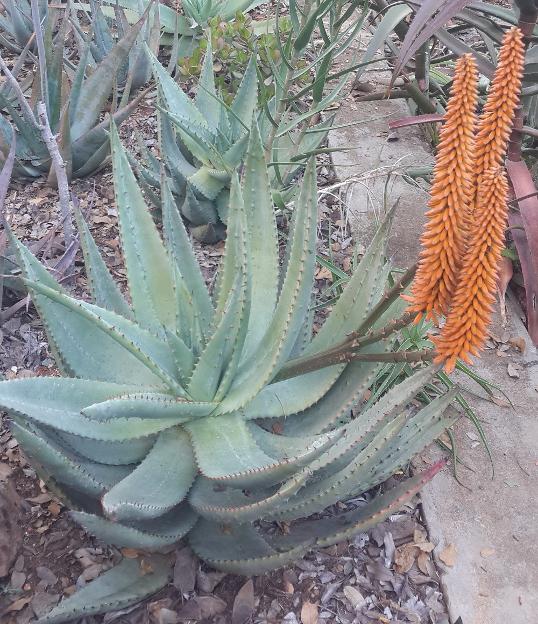
Aloe ferox collected from seed, flowering after 6 years
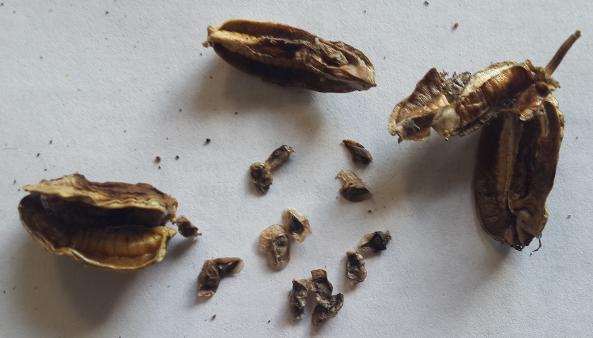
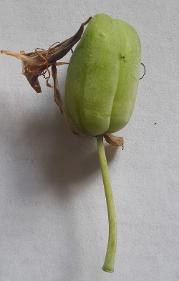
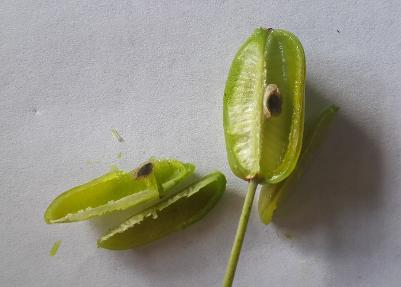
A.thraskii dry seeds. A.zebrina green seed pod dissected pod with seed
- Removing seed from pods is simple if you are paying close attention to your plants daily. The fruit develop from fertilised flowers. The pods (fruit) are usually green until they start to dry out and dehisce (to split and discharge the seed.) You need to be wide awake to harvest your seed before it all blows away! Timing is of the utmost importance. If you are unable to watch the ripening pods every day, you may wish to cut it open before they dry out. Make sure you do this just before they dry out as the seed must be ready. When you cut open your pod, you need to see black seeds (white seed is not sufficiently mature and you have cut too early!)
- Aloe seeds are found in three longitudinal compartments. You can cut into these lengthwise with a sharp knife and then gently remove the seed. Watch out as some pods are deliciously juicy and are prone to staining everything they come in contact with. Once seed is black and mature, it is robust and you are unlikely to cut any seeds in half. Each species and pod is different – some will have a myriad of seeds and others will have only a few. Much of this is also reliant on how well pollinated the flower were. Another reason to keep our bugs, beetles, bees and birds happy! Aloe seed comes in all shapes and sizes, some tiny, some large, some dense and some with large wings so they are dispersed by the wind.)
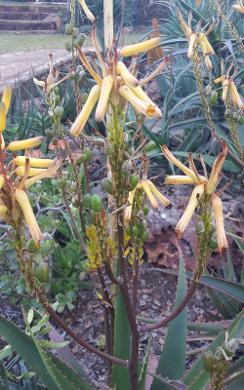
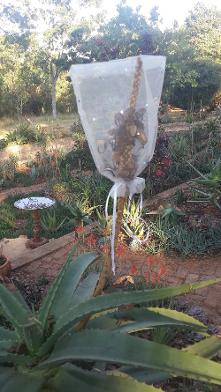
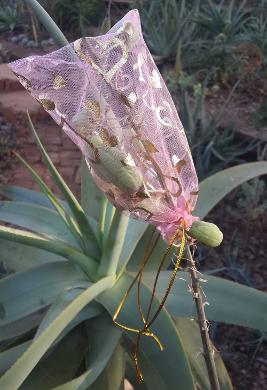
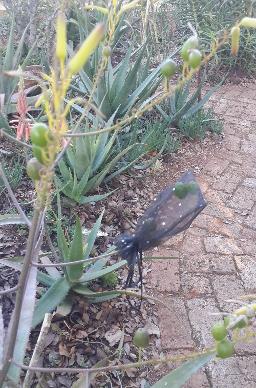
A.dawei (yellow) seed in abundance. A thaskii seed collection. Collecting seed from green pods. A labworana seed and collection.
- A good way to collect seed is to tie little paper or mosquito-net-like fabric bags over the seed heads while they mature and dry out on the plant) This collects any seed from pods that dry out and split quicker than the rest of the flower head.) Do not leave bags of seed outside in the sun for too long, as they will not remain viable for long.
- Seeds can also be dried on newspaper or kitchen roll, for a couple of weeks in a dry spot if needs be.
- Seeds don’t need much special care or handling before planting!
- Keep a disciplined labelling system as you collect your seed, as nothing is more infuriating than sowing a batch of seed and germinating something completely unrelated or unknown!
- When labelling seeds, include the plant’s name, where it was collected from, the date of harvesting and sowing position.
- It is best to store seeds in paper packets or envelopes (these are easy to label at the same time) to ensure good air circulation.
- Your paper packets can then be stored in sealed jars or an old shoebox, if you desire. Recycle a packet or two of silica gel by placing into your jars to absorb any remaining moisture.
- Some seed is best sown immediately, however, most seed remains viable for one to two years (occasionally longer).
- Store your seed in the refrigerator in a waterproof container to increase the time the seed will be viable.
- Seed is less likely to germinate if temperatures are below 18°C.
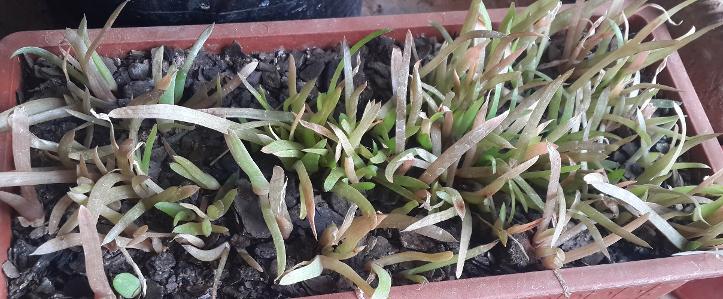
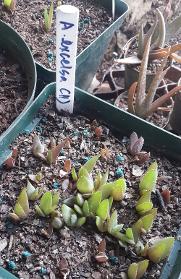
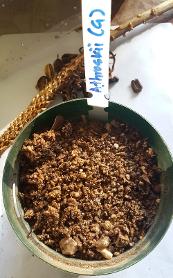
A.marlothii seeds from garden plant. A.excelsa seed from Great Zimbabwe habitat. A.thraskii seed from garden
It is important to establish which of your current plants are hybrids as seed from these, more than likely,will not look the same as the parent plant. Often, the best way to propagate your cherished hybrid aloes, is from suckering (splitting those little off-sets that appear and grow from the parent plant), not from seed. Several nurseries deliberately cross two or more different plant varieties to create a new plant with mixed traits (these are usually protected by patents, preventing you from propagating them for commercial use.)
To ensure you are collecting seed from a “true species”, you need to either collect from natural habitat, where only one species occurrs (as Aloes flower at different times, some species may flower alone in a month and you can then rest assured your seed will be true), or buy from professional growers who prevent pollinators from moving between species or do their own pollinating.
The whole seed head must be completely dry before you take the seeds (you don’t want them to rot or get a fungus)
© Copyright Zim Aloe Chick
